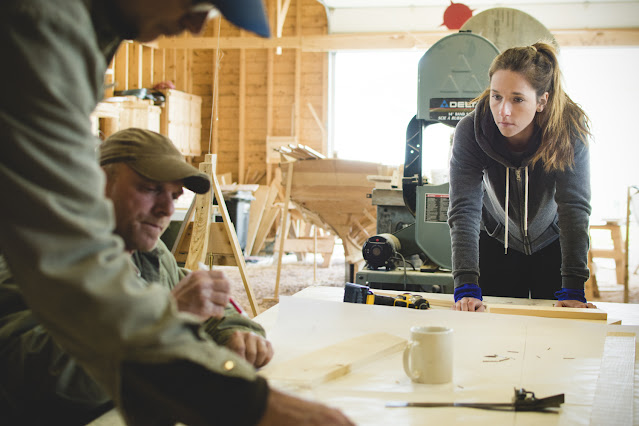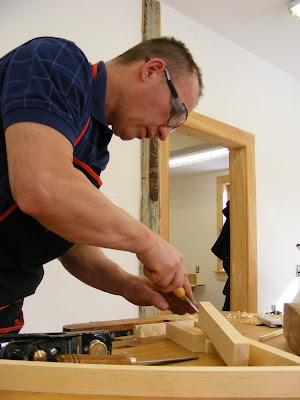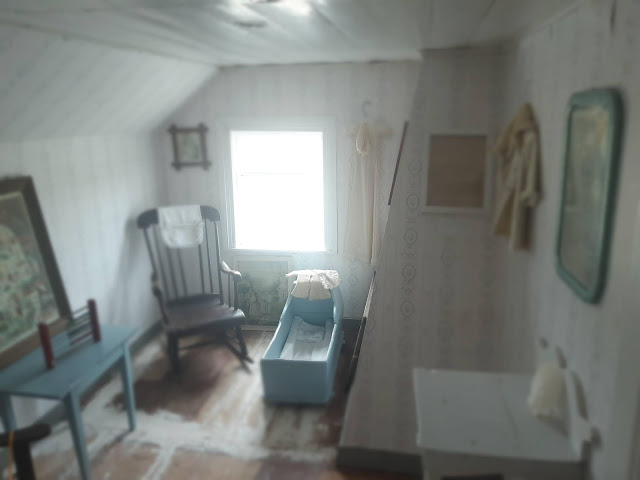In this edition of our newsletter: heritage and what the past has to teach us about a sustainable future; threats to the continued transmission of craft skills in Newfoundland and Labrador; and the history of the Burgess family of Whiteway, Trinity Bay; plus a link to our ongoing Fieldnotes series!
Wednesday, February 3, 2021
Tuesday, February 2, 2021
Community Development and Safeguarding Intangible Cultural Heritage in Newfoundland and Labrador
 |
| Boat building workshop, courtesy Wooden Boat Museum of NL |
As part of Heritage NL's ongoing Fieldnotes series, this publication provides an overview of the Intangible Cultural Heritage (ICH) program developed by Heritage NL. It traces the early development of the program, and outlines the ICH Strategy and the shifting role of heritage work in Newfoundland and Labrador.
It then provides an overview of two ongoing projects that explore, document, and encourage the continued safeguarding and sharing of ICH knowledge and skills: the Living Heritage Economy Case Study project, and the NL Heritage Craft at Risk project.
Friday, January 29, 2021
Heritage NL has two job postings: Executive Director and Training Coordinator
Two new job postings with Heritage NL
Training Coordinator
Heritage NL seeks an individual to perform the role of Training Coordinator to help develop and deliver a series of modules and mentorships targeted to: a) individuals involved in the building trades who are interested in developing their knowledge of traditional building practices and restoration and; b) members of the public interested in developing knowledge and practice of traditional skills that are at risk of disappearing in the province.
PDF of job ad - Deadline Feb 12, 2021
Executive Director
The position of Executive Director is responsible for the management of all staff, all reporting functions to the board and Provincial Government; budgeting and financial management, providing support to the board in its planning and policy making functions, and the implementation of all plans and policies. Heritage NL seeks a highly motivated individual with experience in organizational management and planning. Candidates should have demonstrated training, knowledge of, experience in, and a broad understanding of the heritage field and current thinking and issues relating to it. They should be comfortable working at the grass roots community level at the same time that they can work with senior government officials, community leaders, and decision-makers. Good facilitation skills are a definite asset as is recognized leadership in the heritage field.
Living Heritage Podcast Ep199 Growing up as a Lebanese Newfoundlander
Folklorist Wyatt H. Shibley interviews retired local politician Lorraine Michael about what it was like growing up with Lebanese roots in downtown St. John’s.
Living Heritage is about people who are engaged in the heritage and culture sector, from museum
professionals and archivists, to tradition bearers and craftspeople - all those who keep history alive at the
community level. The show is a partnership between HeritageNL and CHMR Radio.
Theme music is Rythme Gitan by Latché Swing.
Tuesday, January 26, 2021
A history of the Lane/Heffern House in Salvage, Bonavista Bay
The Salvage Fisherman’s Museum (alternatively, the Lane/Heffern House) was designated a Registered Heritage Structure by Heritage NL March 20th, 2020 due to its historic and aesthetic value. Supposedly the oldest surviving home in the area, the museum building was constructed sometime in the mid 19th century by members of the Lane family who lived in Salvage by 1830.
Thursday, January 7, 2021
Living Heritage on the Baccalieu Trail
It may have been "Stay Home Year" here in Newfoundland and Labrador, but that didn't stop the Living Heritage Podcast from exploring! In "Hidden Gems of the Baccalieu Trail," host Natalie Dignam takes you on an audio tour of the Baccalieu Trail region on the island of Newfoundland. Explore all the episodes in the series by clicking the pinpoints on the map.
Listen to Living Heritage Episode 198: Make Your Own Podcast. Natalie walks your through creating your first podcast!
Thursday, December 24, 2020
Living Heritage Podcast Ep197 The Bowring Park Footbridge and Blanche Lemco Van Ginkel
In 2020, Heritage NL designated a concrete footbridge in Bowring Park as a Registered Heritage Structure, one of the first modernist structures in NL to be recognized as such. The bridge was designed in part by influential architect Blanche Lemco Van Ginkel, and it has been an object of fascination and study for Newfoundland architecture student Sarah Reid. Folklorist Dale Jarvis chats with Sarah about her interest in the footbridge, and shares some of the audio she recorded in conversation with Blanche Van Ginkel herself.
Living Heritage is about people who are engaged in the heritage and culture sector, from museum
professionals and archivists, to tradition bearers and craftspeople - all those who keep history alive at the
community level. The show is a partnership between HeritageNL and CHMR Radio.
Theme music is Rythme Gitan by Latché Swing.
Wednesday, December 23, 2020
Quick Reads in NL Vernacular Architecture: What is a Trunnel?
The photo above was taken underneath the Fisherman’s Museum in Salvage, Bonavista Bay, and shows the sill of the building, with a protruding trunnel. But what is a trunnel?
A trunnel (also spelled treenail, trenail, or trennel) is a remnant of ancient building technologies which you can still see in some Newfoundland and Labrador historic buildings. A “treenail” is essentially that, a nail made from a tree: a peg or tenon. Devine’s Folklore of Newfoundland defines it as “Corruption of trenail: a wooden peg, a foot or so long, used for fastening ships' timber, wharf sticks, etc.”
The use of wood as a fastener can be traced back over 7,000 years, and archaeologists have found traces of wood nails in the excavation of early European sites. When settlers arrived in Newfoundland, they brought their knowledge of trunnels with them, and used them in both house and ship building. The Slade and Kelson Diaries, Trinity, for Monday 16th, April 1832, reports that a leak in the Caroline was found to have been caused by a “trunnel vacuum” - a hole left where a trunnel should have been driven in.
Treenails are cut from a single piece of wood, and used so that the grain of the treenail runs perpendicular to the grain of the receiving wood. This adds structural strength to the joint. Hardwoods were preferred, and when they couldn't be found in Newfoundland, they were imported, as the P. & L. Tessier advertisement below, from the Evening Herald of 1892-06-22, demonstrates:
Tuesday, December 22, 2020
Salvage Fisherman's Museum - the mystery of the missing chimney
We were also able to crawl under the house, where the remains of the original chimney foundation are still visible. These are large stones, measuring about 1.5m from the back wall of the house, and about 2m wide.








